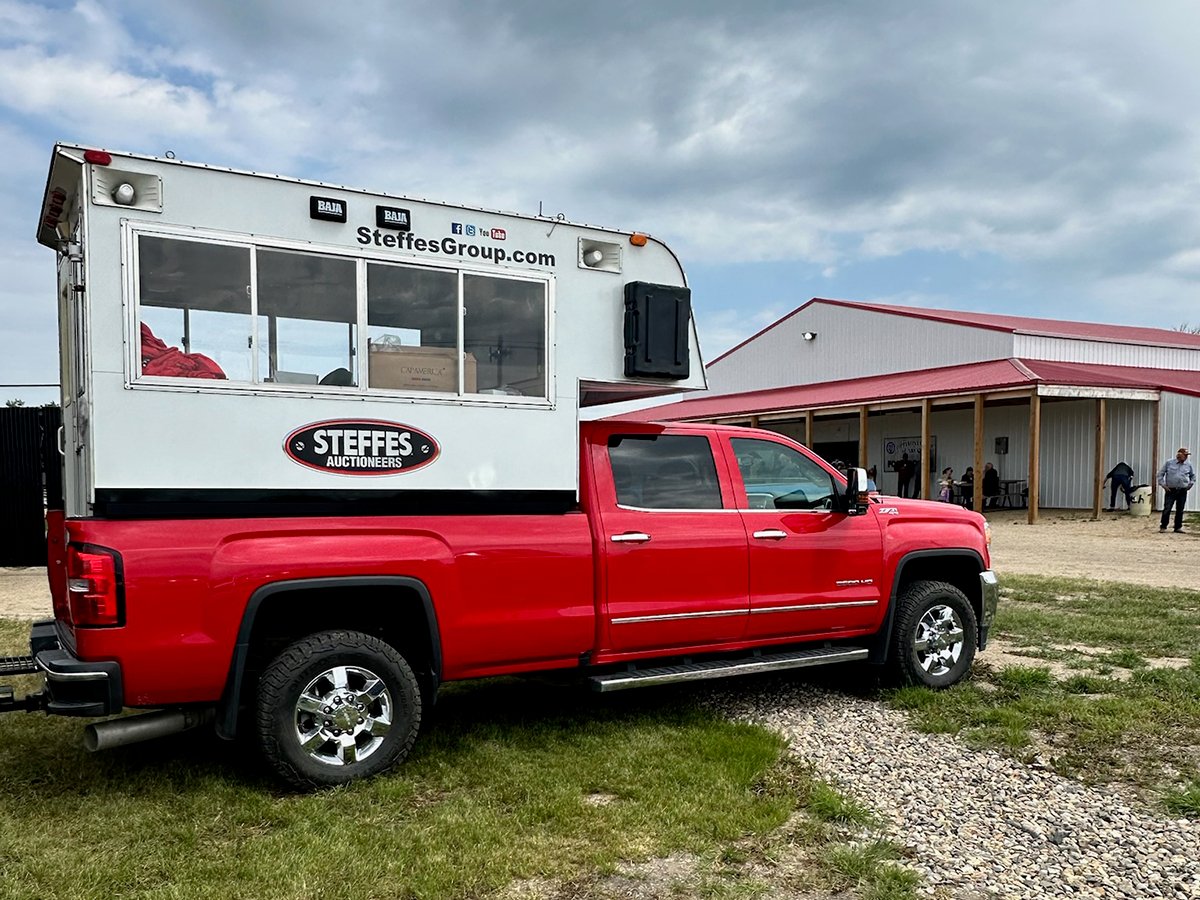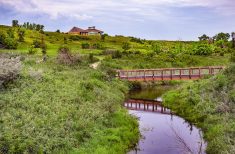DRINKWATER, Sask. – Yars Lozowchuk says he is changing his lifestyle before depleting world oil stocks do it for him.
The Regina resident built a new home that meets his commitment to a more environmentally sustainable life in the tiny community of Drinkwater, population 65.
Work began in 2008 and continued through 2009 on a house made of flax straw bales. About 450 square bales were situated on a concrete foundation in a load-bearing type of wall construction.
The walls will be covered with stucco, inside and out, and the building will be heated with solar panels on the south side of the roof. The floor also contains radiant heating.
Read Also

Farm auctions evolve with the times
Times have changed. The number of live, on-farm auctions is seeing a drastic decline in recent years. Today’s younger farmers may actually never experience going to one.
Electricity has been installed but Lozowchuk hopes to eventually live off the grid.
“As a father and a grandfather, I wanted to lay the groundwork for my own family, set an example,” he said.
Lozowchuk is a sociologist who spent years working with the Saskatchewan Choral Federation and now operates a personal care home in Regina.
About three years ago he learned of the peak oil concept – the idea that world oil output will decline and lead to scarcity. He decided to learn for himself whether this notion was serious.
He attended a Boston conference in 2006 and then subsequent meetings in California and Colorado to help him decide.
“This was very serious,” he said of what he learned.
“You can’t dismiss people like Matthew Simmons (a leading expert on peak oil). We have to transition quickly or we’re in for a rough ride.”
Lozowchuk now believes the world’s petroleum-based economy will unravel, resulting in a vulnerable food supply.
He said flax straw homes are part of the first step toward developing a lifestyle that doesn’t rely as heavily on non-renewable energy.
“The second phase is the development of an independent food supply.”
This will mean a return to the way things used to be, he said. Farmers grew virtually all the food they needed when he was growing up on a farm near North Battle ford, Sask.
“I don’t think agriculture is going to survive in its present form.”
Drinkwater is on Highway 39 between Moose Jaw and Corinne, Sask., in the heart of the Regina Plains and traditional grain growing country.
The village was receptive to Lozowchuk’s idea of alternative housing. Another foundation sits nearby, waiting for its flax straw walls.
The 1,600 sq. foot residence in-cludes a garage and many south-facing windows to catch the sun.
Lozowchuk likes the idea of passive annualized heat storage, where hot summer air is stored for use in winter.
He hopes a windmill will one day further reduce his environmental footprint.
Biological toilets, also known as dry toilets or composting toilet systems, mean no effluent to worry about.
While many green innovations are costly, Lozowchuk said his completed home will cost about $125,000, or $78 per sq. foot.
He added he is in no particular hurry to move in. The house will be done when it’s done, he said.















